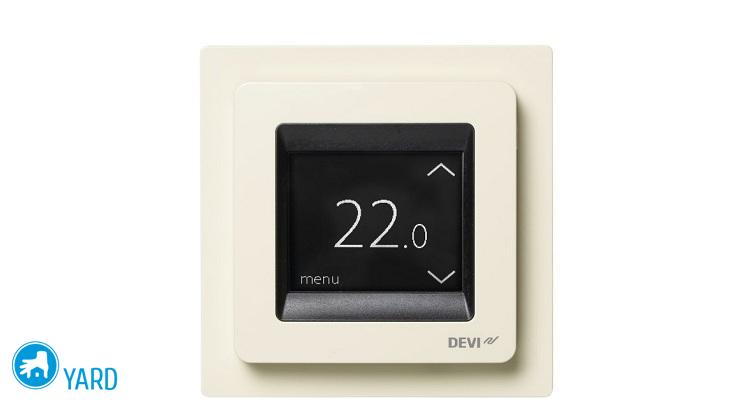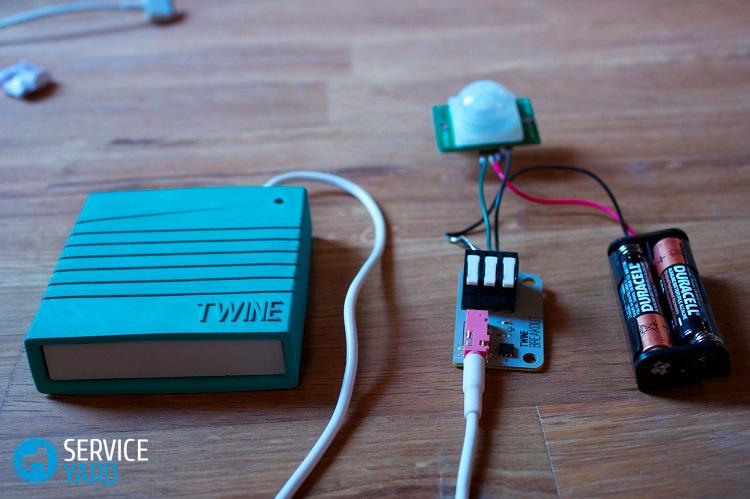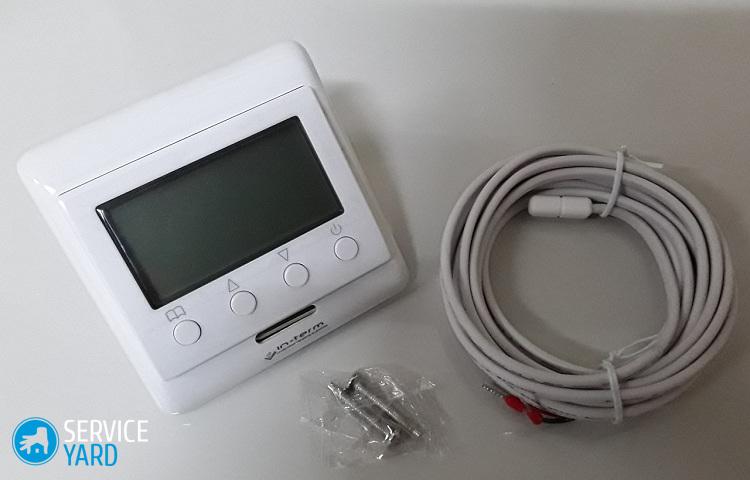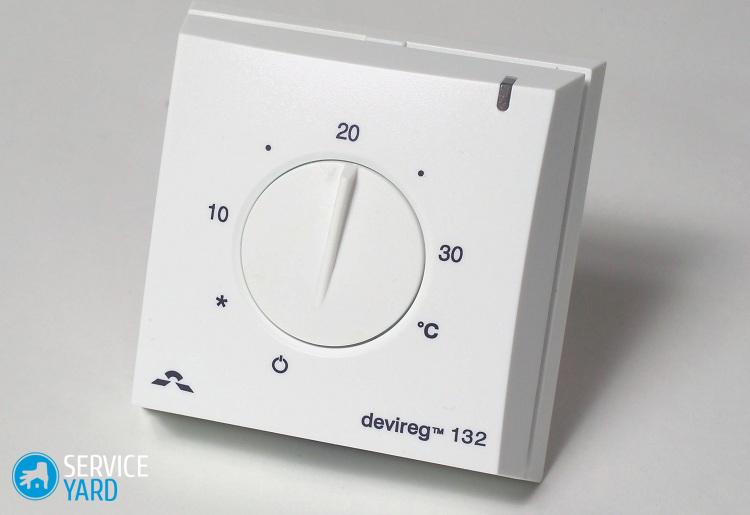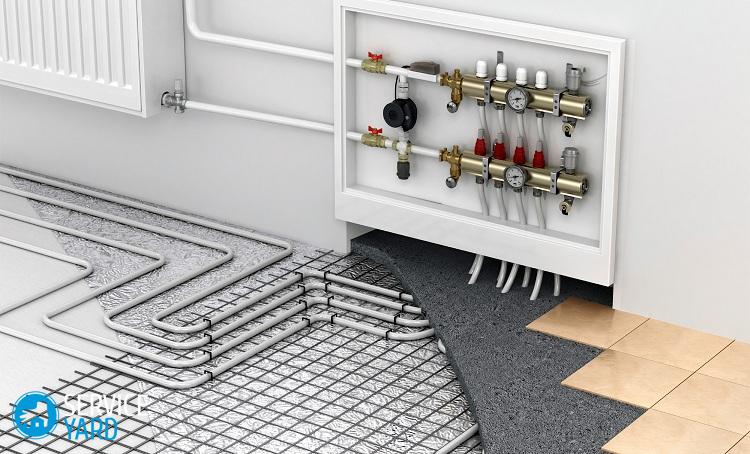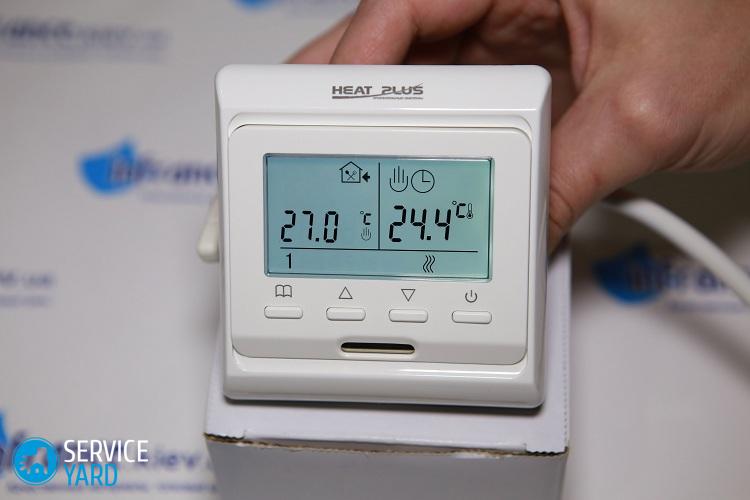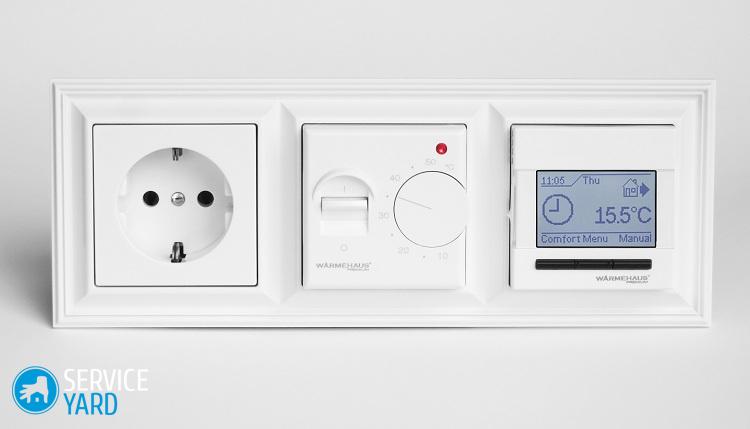Underfloor heating sensor
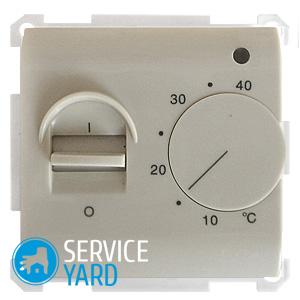
Warm floors have long gained great popularity and is one of the most common heating systems. According to the principle of operation, it is divided into two types: one - operates due to the circulation of water, the second - due to electricity. The latter is considered more economical and convenient, as it eliminates leaks. For its installation, you will need not only insulating materials, cables directly, but also a floor heating sensor, with which you can adjust the air temperature. What kind of device is it and how to choose it - now we will find out.
to contents ↑Sensor Functions
Electric underfloor heating are cable, wire, rod and amorphous tape. They differ by the principle of action. They begin their work after connecting to a power source. But, operating at full capacity, the system:
- will last a very short time;
- the floor covering can be deformed from high temperatures, especially for carpeting and laminate - they begin to emit fumes harmful to human health at high temperatures;
- the cost of electricity will be significant;
- the warm floor will constantly overheat, which will lead not only to rapid wear of the system, but also to inconvenience of use.
To avoid these problems and increase the life of the system, you need a temperature sensor for the warm floor:
- This critical element of the system consists of copper, which is coated on top with insulating material.
- To prevent any external influences from affecting the temperature sensor of the warm floor, one of its ends is also protected by a special flask.
- The length of the wires can be both reduced and increased up to 50 meters.
to contents ↑Important! Many manufacturers of underfloor heating systems refuse to provide a guarantee for their products if it is not planned to use a temperature sensor and temperature controller.
The principle of operation of thermostats
The principle of operation of the temperature sensor for a warm floor is quite simple. The device determines the temperature of the floor or air in the room and transfers these parameters to the thermostat:
- If the resistance of the sensor decreases, then the temperature in the room has risen.
- If the resistance increased, then it became cool.
Types of devices
The temperature necessary for the room can be maintained in the set parameters. And here it all depends on the type of device.
Mechanical
This is the simplest kind of sensor and the cheapest. It works on the principle of a conventional iron:
- The desired temperature is higher - manually set the desired position by turning the wheel.
- Parameters are set solely on their own feelings.
The main working element of this sensor is a metal plate, which regulates the temperature:
- As soon as it is reduced, the plate immediately reacts and slightly bends.
- The lower the temperature, the greater the curvature, and at some point the plate begins to come into contact with the second contact.
- As soon as this happens, the heating system starts up.
Important! The advantages of such a device include the ease of use. In addition, it is easy to fix it yourself.
Digital
The principle of operation of a digital device is similar to a mechanical counterpart. A special element generates a special signal that starts the system. Power directly depends on the conditions in the room.
Features:
- The main advantage is that the temperature is controlled using the keys or the touch screen, it is possible to set the temperature to the nearest tenth of a degree.
- The main disadvantage is the high cost of the device compared to a mechanical device.
Programmable
This underfloor temperature sensor is the most advanced of its kind. It allows you to set a program in the device’s memory, which will regulate the temperature, depending on conditions:
- A huge plus - such a sensor can independently turn off the system when no one is at home or when everyone is sleeping. You can also program it to turn on half an hour before coming home from work.
- Another plus - due to the “smart” adjustment system, considerable savings in energy costs are achieved.
- The disadvantages of such a device include its cost. It is the most expensive device for underfloor heating.
- Also, for many, a significant drawback is the difficulty of controlling such a sensor.
Important! If you do not want to spend a lot of money on the purchase of a device, then an alternative may be a thermostat with a limiter. It is triggered when the maximum or minimum set temperature is reached. There are also devices with an alarm that triggers when the floor is overheated. But such a sensor can not be called a budget one.
Which to choose?
- When choosing a temperature sensor for a warm floor, do not immediately write off mechanical devices. They will perfectly cope with their task in the bathroom or toilet.
- In the rooms where you spend most of the time, it is better to install programmable devices that will always maintain a comfortable temperature.
Sensor Requirements
The choice of a system that will regulate the operation of the warm floor must be based not only on the characteristics of the device. Other indicators are important here:
- Power. Everyone understands that a weak device will not cope with a system that occupies a large area, and vice versa. Therefore, it is important to choose a sensor in accordance with the load, otherwise - you will have to install a magnetic trigger between them. Only he can protect the device from increased loads. The standard power for such devices is 3 kW.
- Feature set. Assess the need for all the functions that are in a given sensor. If you plan to use the underfloor heating system only once a month, then why do you need an expensive device? Such a rational approach will not only save money, but also effectively use the sensor.
- Ease of use. If you still had a lot of questions about how to turn it on, how to connect it, how to set the required temperature when buying a temperature sensor for a warm floor, then you should think about the need to purchase such a model. For example, it is very difficult for older people to deal with technically sophisticated devices. Therefore, if you install a sensor in their apartment, then do not complicate their life with sensors that are controlled from a computer or phone.
- Easy to connect and look. If the sensor is a box that does not fit into the interior, then you have to come up with a disguise for it. Therefore, when choosing a device, immediately imagine how it will look on the wall. Also, before work, you should carefully study the connection instructions.
to contents ↑Important! Be sure to check with the seller what other features the purchased device has. For example, many use the underfloor heating system to heat several rooms. In this case, it is better to install a dual-zone sensor, which will monitor the temperature in both rooms.
Installation
Before you connect the sensor of the warm floor, you need to determine the method of installation, and it depends on the type of flooring:
- If the device will be located under a soft coating, such as a carpet or laminate, then it is placed in the cylinder and laid only after the cement base has completely dried.
- If the sensor will be under a hard coating, then before installing the sensor underfloor heating, the device is placed in a special gel shell. It provides protection against various mechanical influences and damage.
When carrying out work, you should take into account safety rules and think in advance how the devices will be connected:
- in a straight line - in this case, the thermostat and heating cable;
- using a box through which the cable first passes and only then it is pulled to the circuit.
Important! To connect a temperature control system, you will need to draw a separate line from the shield. For this, copper wiring with a cross section of 2.5 mm2 is suitable.
The general scheme of work on installing a warm floor temperature sensor is as follows:
- The circuit breaker is inserted into the flap.
- The junction box is fixed to the wall, wires from the shield are connected to it.
- Then the wall is ditched to the floor under the corrugated tubes.
- A heating cable is inserted in one of the corrugations, and a temperature sensor in the other.
- The end of the corrugation with the sensor is closed with a plug in order to avoid the ingress of dust or a solution with which work will be carried out.
- Now this part is fixed between the two circuits with a clamp or a special tape.
- A sensor is installed nearby with a thermostat. The optimal distance is 50 cm.
- The tube is then discharged into the stroba, while the angle of its bending should not be sharp.
to contents ↑Important! After connecting the floor heating sensor, it is worth starting the system for 1 minute. If the light on the screen lights up and the temperature begins to rise, it means that all work has been done correctly.
Trouble-shooting
Sometimes it may happen that after installation of the underfloor heating sensor the device did not work. Although the test was conducted and showed the functionality of the system. Experts assure that there are two reasons to explain any malfunction of electrical devices:
- no contact where it should be;
- there is contact where it should not be.
During the diagnosis, you will need a tester and disconnect the power from the network. Then they follow the instructions:
- Using a screwdriver, it is necessary to pry off the adjusting gear so that there is access to the screw connection.
- Also, the device can be connected using clips or fasteners. It is necessary to remove the housing in any case.
- Then check if the input circuit is working. If there is no signal, then some switch does not work. In this case, you will have to check the operability of all devices in the circuit.
- If everything is in order with the input circuit, then the next item to check will be the voltage at the output, before that the thermostat must be disconnected from the thermal circuit. If there is no signal at the output contacts when the feed is on, then the sensor or control unit is out of order.
to contents ↑Important! Repair of these units is carried out in special workshops, but it is more rational to simply change the device.
Stock footage
For high-quality operation of the underfloor heating system, a sensor is simply a necessity. You can do without it, but then the warranty is removed from the heating system, and you will encounter certain problems during operation. If you have limited means, then even a mechanical device would be a great option. Installing it yourself is not so difficult. The main thing is to know how to connect and how to establish a power system. Then it remains only to enjoy a comfortable temperature in any room of your apartment.
- How to choose a vacuum cleaner taking into account the characteristics of the house and coatings?
- What to look for when choosing a water delivery
- How to quickly create comfort at home - tips for housewives
- How to choose the perfect TV - useful tips
- What to look for when choosing blinds
- What should be running shoes?
- What useful things can you buy in a hardware store
- Iphone 11 pro max review
- Than iPhone is better than Android smartphones




